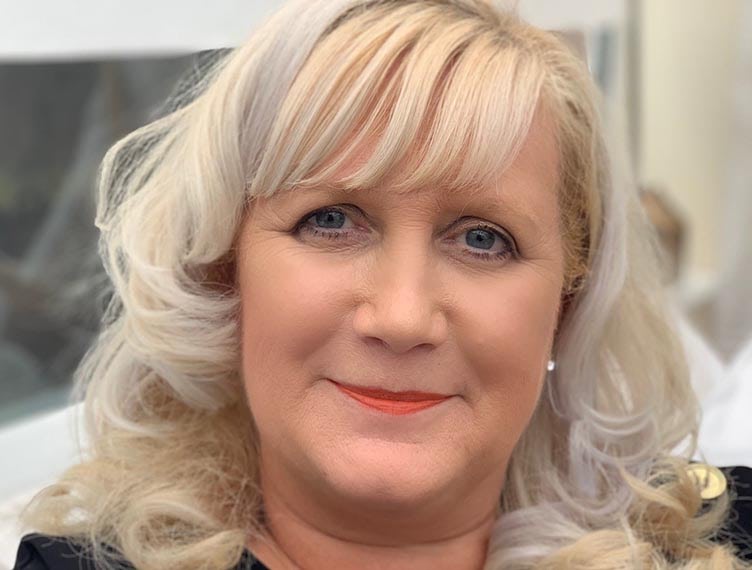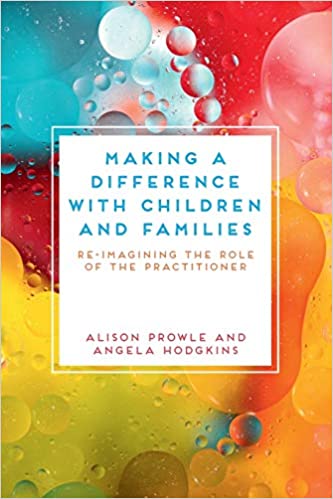Children, Young People and Families Landscape

The professional roles within the field of the Children, Young People and Families landscape have witnessed a huge change over the years, including the variety of qualifications now on offer and the wide range of roles within the workforce.
Every professional in this field of expertise needs to engage with continuous professional development and it was my own exclusion from professional updating and training as ‘only the Nursery Nurse’ which forms a small part within this new and exciting textbook which explores the Children, Young People and Families landscape and the varied professional roles within it.
As a Nursery Nurse, I was never invited to the CPD Ball to wear ‘glass slippers’ and engage in professional development, but always the Cinderella who was left behind with the paint pots to wash, clean and refill ready for the next day, and my case study within this book is entitled, ‘Cinderella, you will go to the CPD Ball’. My case study offers humour but an integral part of my writing hopes to spark discussion and debates as to the importance of CPD for all professionals within the Children, Young People and Families workforce.

In both the case study and during discussions with the authors (Alison Prowle and Angela Hodgkins), we shared our personal reflections of how CPD should be both developmental and personalised. Furthermore, when working with other professionals, it allows us to grow a community of minds which in turn impacts upon our professional practice and the lives of our children, young people, and families.
There are a range of case studies within the book developed in partnership with practitioners which include coverage of the extended provision and the many professionals working with children in a 0-19 age range, in line with current practice and here are just a few contributors :
Rebecca Thomas, Partnership Lead Manager, Save The Children
Rebecca has contributed to a chapter of the book which examines the importance of communication and the effective collaboration needed to enhance communication. This chapter explores the skills and attributes which enable practitioners to develop the aptitude to respond to parents and children, showing their views have been listened to and taken seriously.
Rebecca explains ‘my case study and reflections reminds us as professionals of the importance of collaborating with families and other professionals, because true partnership and mutual understanding ensures that children from every walk of life can reach their full potential’.
Rebecca shares her experiences of challenging assumptions of parents and carers and their child’s underachievement. Rebecca’s case study challenges these assumptions and focuses on the importance of professionals partnering with families, and goes on to state that this should be done, ‘not in a token way, such as sending out questionnaires to tick a box of requirements, but by working as true partners to maximize the outcomes for children’.
Hazel Richards, Speech and Language Therapist
Within one chapter on communication and collaboration is a further case study, contributed by Hazel. This explores the complexity of alliances and resource demands that professionals operate within.
Hazel describes how the needs of Sam, a teenager who sustained a significant head injury, required her to challenge the ‘standard’ level of input and to consider the preferences of Sam and his parents.
She poses several critical questions that enable the reader to identify and interrogate the systems, specialisms, conflicts, preferences, working relationships and pastoral care that professionals must be aware of, and negotiate successfully as they work to make a difference in the lives of children and families.
Emma Davies – Early Years Teacher
Emma’s contribution to the book focuses on leadership and Emma shared with me her delight at being asked to scribe her experiences, particularly as Alison Prowle has played an influential part upon her career ,having taught Emma during her degree. It was during her studies that Emma had both spoken and scribed about her struggles as a ‘reluctant leader’, having fallen into the role by accident. She openly shared her emotions and anxieties as a new leader through to her progression and achievements, and believes it was her qualifications that gave her the confidence to succeed.
Emma believes having time to reflect upon her progress as a leader is critical to obtaining different perspectives as a professional and a leader. She goes onto say that, Reflection has allowed me, ‘to acknowledge my weaknesses, decide how to address these and consider how the impact of my qualifications would improve my professional practice’.
Emma goes on to say, ‘that although in some ways I still think of myself as a ‘reluctant leader’, I now have knowledge, skills and experience to draw on, elements missing in those early years of leadership. I hope my case study can offer some reassurance to those new to the role, demonstrating that although it can be stressful, pressurised and overwhelming, it can also be incredibly rewarding’.
James Boddey Director of Busy Bodies Child Care Centre.
James’ contribution towards the book explains how within his work and writing, ‘one of the key skills required in building and maintaining relationships with others is empathy and understanding’. He goes on to say that ‘in one of the chapters, you will be able to explore the different types and levels of empathy, as well as investigating the benefits of empathy for both individuals and others’.
James believes that empathy is the bridge that enables us to link to others. It bridges the gaps between us whilst not ignoring the gap itself and the differences that make us all special and unique. Adopting and utilising empathy allows us to reach out to other people, connect and support one another within our community of practice. James goes on to ask us as professionals, to consider how empathy is closely linked to reflection, purporting that before we can empathise with others, we need to have a true understanding of ourselves, and only when we understand ourselves can we truly begin to understand others.
There are many more contributions to read in the book and alongside the case studies, the book introduces key concepts regarding empathy and reflection as well as a number of other important concepts in the Early Years Workforce
Considering the essential skills and qualities required for working with children and families, the authors have set out to provide readers with the opportunity to reflect upon what it means to be an effective practitioner, through the exploration of theoretical material and a range of professional disciplines. So whether at the start of your studies on an Early Years, Childhood Studies, Social Work, Nursing or Teaching programme, or an experienced practitioner already working with children and families, this is the ideal text to help orientate your skills and provide the best possible service to your clients, and let me know if you get to wear those ‘glass slippers’!
Annie Pendrey – FE / HE specialist











Responses